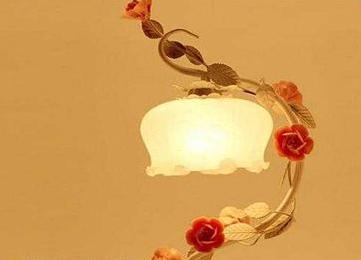 In recent years, the LED industry continues to be the focus of investors, but the actual profitability is not as expected. From TV applications, it is estimated that the penetration rate of LED backlights will reach 91.5% in the fourth quarter of 2013 and almost 100% by the end of 2014. The main reason is that in addition to the use of LED backlighting by brand owners to increase added value, due to the reduced demand for CCFLs, the relevant raw materials required by CCFLs have gradually ceased production, making the mainstream of backlight applications have to move closer to LED backlight sources. So it seems that LED applications have approached saturation in the backlight market, manufacturers have turned the battlefield to LED lighting.
In recent years, the LED industry continues to be the focus of investors, but the actual profitability is not as expected. From TV applications, it is estimated that the penetration rate of LED backlights will reach 91.5% in the fourth quarter of 2013 and almost 100% by the end of 2014. The main reason is that in addition to the use of LED backlighting by brand owners to increase added value, due to the reduced demand for CCFLs, the relevant raw materials required by CCFLs have gradually ceased production, making the mainstream of backlight applications have to move closer to LED backlight sources. So it seems that LED applications have approached saturation in the backlight market, manufacturers have turned the battlefield to LED lighting. NPD DisplaySearch's latest report on LED lighting market special report pointed out that after many years of technology accumulation and design improvement, LED has begun to gradually replace the traditional light bulb.
The rapid growth of the lighting market in 2013 was mainly divided into commercial-operated lighting and government-subsidized streetlight-related markets. The main growth drivers of commercial office lighting come from bulb lamps and lamps. Since some commercial lighting applications are turned on for 24 hours, for example, basement and lane lights, power saving is still the main driving force for replacing LED light sources. On the other hand, because countries around the world are still controversial about the development of nuclear power generation, the rise in electricity bills is an unavoidable trend. We forecast that the overall demand for LED replacement lamps in 2013 will be 1.5 billion, of which the maximum penetration rate for spotlights is 17.8%. The bulb lamp penetration rate was 10.1%, the lamp penetration rate was 5.8%, and the street lamp penetration was 10.5%.
From the point of view of land, the main demand for replacing LED street lamps comes from the mainland and emerging markets such as Brazil, Russia and Mexico. As for the consumer market, the highest degree of acceptance is still in Japan. The main reason is that the price of power saving lamps or long lamps in Japan is high. In recent years, major consumer brands in Japan such as Panasonic and Toshiba Mitsubishi, NEC, Sharp and others are competing to introduce various types of LED lamps and replacement LED bulbs.
We can find that the traditional incandescent light bulb has been stable because of its luminous efficiency and will not progress anymore. Therefore, LED bulbs can only be popularized when the brightness specification and price part are close to traditional incandescent light bulbs. In terms of design, LED lamps still follow the appearance of traditional bulbs. Under the condition of continuous improvement of luminous efficiency, the size of future LED light sources will be smaller than traditional light sources, and the use of light sources for lamp design will also be less limited. Can bring more variability to the light source. At present, some manufacturers have proposed the concept of a disposable lamp source, taking the bulb lamp design as the main force from the past light (LED light source), machine (bulb mechanism design), electricity (power supply design), and heat (bulb cooling as a whole). Instead of focusing on protecting power supply parts that are most easily damaged by heat, the LED light source that is inexpensive and can be mass-manufactured is changed to a disposable structure; because heat dissipation considerations are reduced, prices can be reduced on heat dissipation materials. And because it does not consider the life of the LED light source, so the chip can use a large current drive, when the LED light source brightness decay, the power supply part can still be used, only need to replace the LED light source to restore the original brightness. This concept is a new concept that subverts the idea that LEDs must be long-lived.
NPD DisplaySearch LED lighting market report also describes the LED bulb design direction:
The foundry or mass-produced bulbs do not require novel appearances, and priority is given to automated production, with the aim of mass production of a single type.
In addition to its own branded bulb design, the price of its own brand is still an important part, because many LED bulbs are still covered with lamps.
The 2D surface light source is extended to a 3D three-dimensional lighting angle, that is, from a directional light source to a nearly conventional tungsten light bulb and a light-saving light bulb (320 degree light emission). In 2013, the trend will be to improve the form of LED light sources, columnar or linear light sources will gradually become the mainstream.
Circular Connectors are mostly designed for commercial signal and power applications.Common classification is material: all plastic connector and metal connector, collectively known as CPC connector.Generally, stable high temperature resistant thermoplastic materials are used, and the working temperature is - 40 ℃ - 105 ℃.Fast connection / disconnection with the help of thread, with active braking coupling function.Built in male and female pin protection device.
Circular Connectors
Circular Connector,Circular Connector Types,Circular Power Connector,Circular Electrical Connectors
Suzhou WeBest Electronics Technology Co.Ltd , https://www.webestet.com